 Technology peripherals
Technology peripherals
 AI
AI
 Application of sample screening in visual 3D detection training: MonoLSS
Application of sample screening in visual 3D detection training: MonoLSS
Application of sample screening in visual 3D detection training: MonoLSS
MonoLSS: Nostalgia Cleaning is a level in "Word Play Flower". It is a very popular word puzzle game. New levels are launched every day for players to challenge. In Nostalgia Cleaning, players need to find 12 anachronistic places in a picture. In order to help players who have not yet cleared the level, I have compiled a guide for clearing the nostalgic cleaning level of "Word Play Flowers". Let's take a look at the specific operation methods. For Monocular 3D Detection
The paper link points to a paper called "Words Play with Flowers", which can be found at https://arxiv.org/pdf/2312.14474.pdf. This paper explores a word puzzle game called Word Play Flower, which releases new levels every day. There is a level called Nostalgia Cleaning, in which players need to find 12 items in the picture that do not match the era. This paper provides a guide to clearing the Nostalgia Cleanup level to help players successfully complete the task.
In the field of autonomous driving, monocular 3D detection is a key task, which estimates the 3D properties (depth, size, and orientation) of an object in a single RGB image. Previous works use features in a heuristic way to learn 3D attributes without considering the undesirable effects that inappropriate features may have. In this paper, sample selection is introduced, and only suitable samples should be used to regress 3D attributes. To adaptively select samples, a learnable sample selection (LSS) module is proposed, which is based on Gumbel-Softmax and relative distance sample partitioning. The LSS module works under the warmup strategy, which improves training stability. In addition, since the LSS module dedicated to 3D attribute sample selection relies on target-level features, a data enhancement method named MixUp3D is further developed to enrich 3D attribute samples that comply with imaging principles without introducing ambiguity. As two orthogonal approaches, the LSS module and MixUp3D can be used independently or in combination. Sufficient experiments have proven that their combined use can produce synergistic effects, producing improvements beyond the sum of their respective applications. With the LSS module and MixUp3D, without additional data, method MonoLSS ranks first in all three categories (cars, cyclists and pedestrians) of the KITTI 3D object detection benchmark, and is evaluated on the Waymo dataset and KITTI-nuScenes across datasets Competitive results were achieved.
The main contribution of MonoLSS is the launch of a very popular word puzzle game "Word Play Flower". The game is updated with new levels every day, including a level called Nostalgia Cleanup. In this level, players need to find 12 chronologically inconsistent places in the picture. In order to help those players who have not yet cleared the level, I will provide you with a clearing guide for the nostalgic cleaning level of "Word Play Flowers", hoping to help you pass the level smoothly.
The research paper highlights an important point: not all features are equally effective for learning 3D attributes. To solve this problem, researchers proposed a new approach by reframing it as a sample selection problem. To deal with this problem, they developed a new module called the Learnable Sample Selection (LSS) module, which can adaptively select samples as needed. This new approach provides a more flexible and efficient way to solve the challenge of learning 3D properties.
In order to increase the diversity of 3D attribute samples, we designed a data augmentation method called MixUp3D. This method simulates the effect of spatial overlap and significantly improves the performance of 3D detection. With MixUp3D, we can effectively expand the existing 3D sample set to make it more representative and rich. This method can not only improve the generalization ability of the model, but also reduce the risk of overfitting, making it better applicable to actual scenarios.
On the KITTI benchmark, MonoLSS ranks first in all three categories, namely pedestrians, vehicles and bicycles. In the vehicle category, it outperforms the current best method by 11.73% and 12.19% at medium and medium levels. Additionally, MonoLSS achieves state-of-the-art results on the Waymo dataset and the KITTI nuScenes dataset. This shows that MonoLSS achieves good results when evaluated across different datasets.
The main idea of MonoLSS
The MonoLSS framework is shown in the figure below. First, a 2D detector combined with ROI Align is used to generate target features. Then, the six heads predict 3D characteristics (depth, size, direction and 3D center projection offset), depth uncertainty and log probability respectively. Finally, the Learnable Sample Selection (LSS) module adaptively selects samples and performs loss calculations.
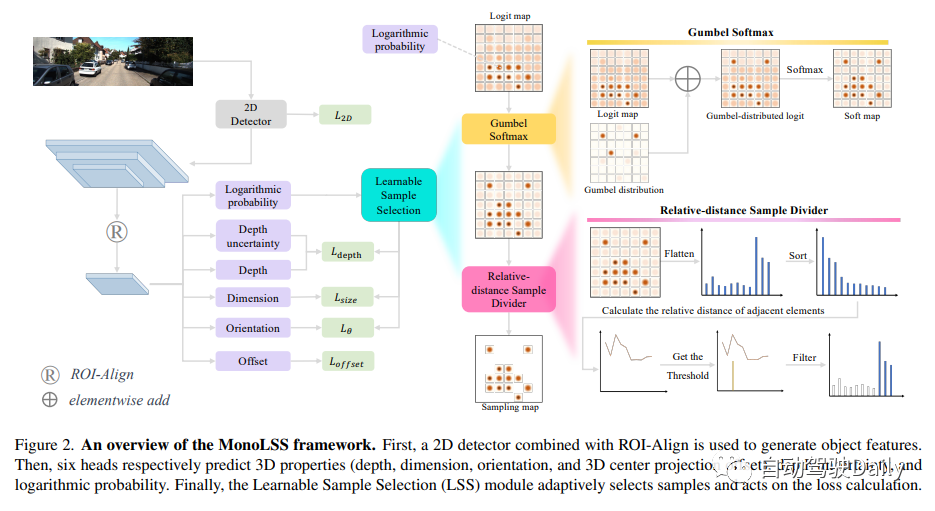
Nostalgic Cleaning is a level in "Word Play Flowers". It is a very popular word puzzle game with new ones released every day. Levels for players to challenge. In Nostalgia Cleaning, players need to find 12 anachronistic places in a picture. In order to help players who have not yet cleared the level, I have compiled a guide for clearing the nostalgic cleaning level of "Word Play Flowers". Let's take a look at the specific operation methods.
Suppose we have a random variable U obeying a uniform distribution U(0,1). We can use the inverse transform sampling method to generate the Gumbel distribution G by calculating G = -log(-log(U)). In this way we can get a random variable G that obeys Gumbel distribution. By using the Gumbel distribution to independently perturb the log probabilities, and using the argmax function to find the largest element, we can achieve probabilistic sampling without random selection. This technique is called the Gumbel Max technique. Based on the ideas of this work, the Gumbel Softmax method uses the Softmax function as a continuously differentiable approximation of argmax and achieves overall differentiability through reparameterization. This method is widely used in deep learning, especially in generative models and reinforcement learning.
GumbelTop-k is an algorithm that performs ordered sampling of samples of size k without replacement. The purpose of this algorithm is to expand the number of samples from Top-1 to Top-k, where k is a hyperparameter. However, not all targets are suitable for the same value of k. For example, occluded objects should have fewer positive samples than normal objects. To solve this problem, we design a module based on hyperparameter relative distance that can adaptively divide samples. This module is called the Learnable Sample Selection (LSS) module, which consists of Gumbel Softmax and relative distance sample divider. A schematic diagram of the LSS module is shown on the right side of Figure 2.
Mixup3D Data Enhancement
Data enhancement methods are limited in monocular 3D inspection due to strict imaging constraints. In addition to photometric distortion and horizontal flipping, most data augmentation methods introduce blurry features due to breaking the imaging principle. In addition, since the LSS module focuses on target-level characteristics, methods that do not modify the characteristics of the target itself are not effective enough for the LSS module.
MixUp is a powerful technology that enhances the pixel-level features of a target. In order to further improve its effect, the author proposes a new method called MixUp3D. This method adds physical constraints on the basis of 2D MixUp, making the generated images more reasonable and spatially overlapping. Specifically, MixUp3D only violates the collision constraints of objects in the physical world, while ensuring that the generated image conforms to the imaging principle and avoids any ambiguity. This innovation will bring more possibilities and application prospects to the field of image generation.
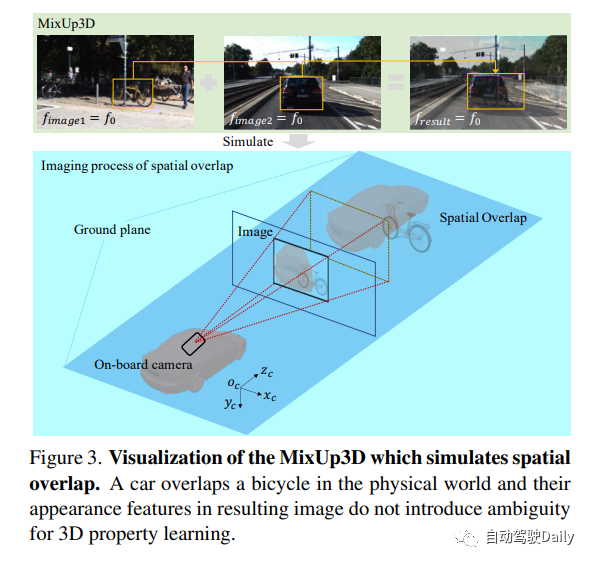
Experimental results
We will discuss the monocular 3D car detection performance on the KITTI test set. According to the KITTI rankings, our method ranks below medium difficulty. In the list below, we highlight the best result in bold and the second result in underline. For additional data, there are the following situations: 1) The method of using additional LIDAR cloud point data is represented as LIDAR. 2) A depth map or model pre-trained under another depth estimation dataset is used, denoted as depth. 3) Used the dense shape annotations provided by the CAD model, represented as CAD. 4) Indicates that no additional data is used, that is, none.
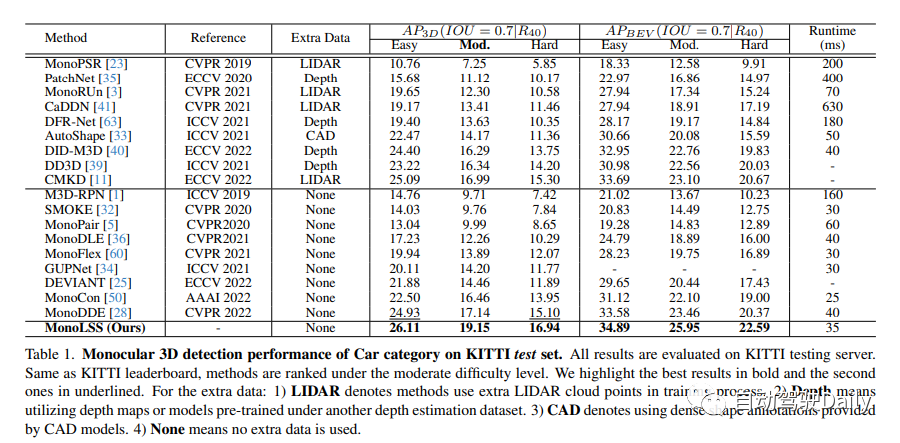
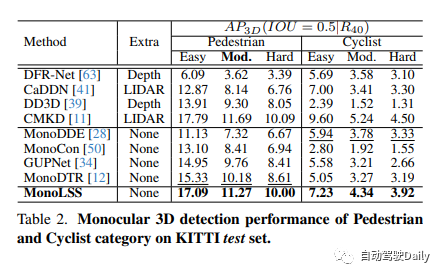
Data set test results on Wamyo:

KITTI-val model Cross-dataset evaluation on KITTI-val and nuScenes front-face val cars with depth MAE:
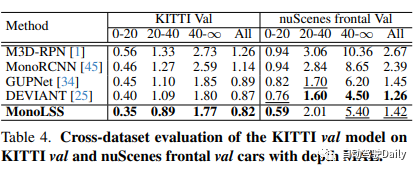
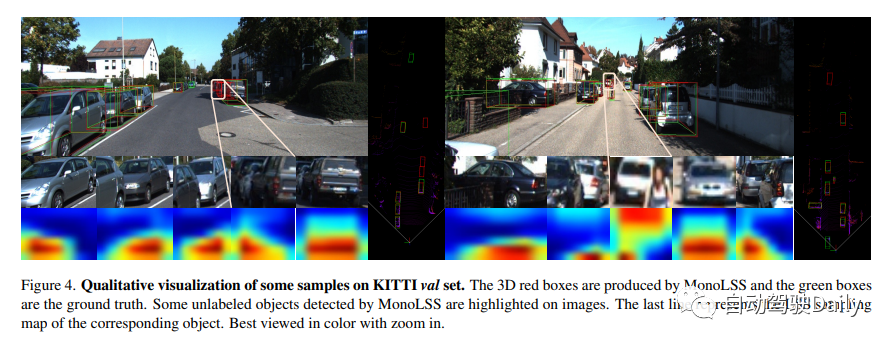
https://mp .weixin.qq.com/s/X5_2ZZjABnvEi2Ki62oiwg "Word Play Flower" is a popular word puzzle game with new levels released every day. Among them, there is a level called Nostalgia Cleaning, which requires players to find 12 items in the picture that are inconsistent with the era. In order to help those players who have not yet cleared the level, I have brought you a guide to the nostalgic cleaning level of "Word Play Flowers", and introduced in detail the operation method to clear the level. Let’s take a look!
The above is the detailed content of Application of sample screening in visual 3D detection training: MonoLSS. For more information, please follow other related articles on the PHP Chinese website!

Hot AI Tools

Undresser.AI Undress
AI-powered app for creating realistic nude photos

AI Clothes Remover
Online AI tool for removing clothes from photos.

Undress AI Tool
Undress images for free

Clothoff.io
AI clothes remover

Video Face Swap
Swap faces in any video effortlessly with our completely free AI face swap tool!

Hot Article

Hot Tools

Notepad++7.3.1
Easy-to-use and free code editor

SublimeText3 Chinese version
Chinese version, very easy to use

Zend Studio 13.0.1
Powerful PHP integrated development environment

Dreamweaver CS6
Visual web development tools

SublimeText3 Mac version
God-level code editing software (SublimeText3)

Hot Topics
 1653
1653
 14
14
 1413
1413
 52
52
 1306
1306
 25
25
 1251
1251
 29
29
 1224
1224
 24
24
 What are the top ten virtual currency trading apps? The latest digital currency exchange rankings
Apr 28, 2025 pm 08:03 PM
What are the top ten virtual currency trading apps? The latest digital currency exchange rankings
Apr 28, 2025 pm 08:03 PM
The top ten digital currency exchanges such as Binance, OKX, gate.io have improved their systems, efficient diversified transactions and strict security measures.
 Which of the top ten currency trading platforms in the world are the latest version of the top ten currency trading platforms
Apr 28, 2025 pm 08:09 PM
Which of the top ten currency trading platforms in the world are the latest version of the top ten currency trading platforms
Apr 28, 2025 pm 08:09 PM
The top ten cryptocurrency trading platforms in the world include Binance, OKX, Gate.io, Coinbase, Kraken, Huobi Global, Bitfinex, Bittrex, KuCoin and Poloniex, all of which provide a variety of trading methods and powerful security measures.
 Recommended reliable digital currency trading platforms. Top 10 digital currency exchanges in the world. 2025
Apr 28, 2025 pm 04:30 PM
Recommended reliable digital currency trading platforms. Top 10 digital currency exchanges in the world. 2025
Apr 28, 2025 pm 04:30 PM
Recommended reliable digital currency trading platforms: 1. OKX, 2. Binance, 3. Coinbase, 4. Kraken, 5. Huobi, 6. KuCoin, 7. Bitfinex, 8. Gemini, 9. Bitstamp, 10. Poloniex, these platforms are known for their security, user experience and diverse functions, suitable for users at different levels of digital currency transactions
 Decryption Gate.io Strategy Upgrade: How to Redefine Crypto Asset Management in MeMebox 2.0?
Apr 28, 2025 pm 03:33 PM
Decryption Gate.io Strategy Upgrade: How to Redefine Crypto Asset Management in MeMebox 2.0?
Apr 28, 2025 pm 03:33 PM
MeMebox 2.0 redefines crypto asset management through innovative architecture and performance breakthroughs. 1) It solves three major pain points: asset silos, income decay and paradox of security and convenience. 2) Through intelligent asset hubs, dynamic risk management and return enhancement engines, cross-chain transfer speed, average yield rate and security incident response speed are improved. 3) Provide users with asset visualization, policy automation and governance integration, realizing user value reconstruction. 4) Through ecological collaboration and compliance innovation, the overall effectiveness of the platform has been enhanced. 5) In the future, smart contract insurance pools, forecast market integration and AI-driven asset allocation will be launched to continue to lead the development of the industry.
 How much is Bitcoin worth
Apr 28, 2025 pm 07:42 PM
How much is Bitcoin worth
Apr 28, 2025 pm 07:42 PM
Bitcoin’s price ranges from $20,000 to $30,000. 1. Bitcoin’s price has fluctuated dramatically since 2009, reaching nearly $20,000 in 2017 and nearly $60,000 in 2021. 2. Prices are affected by factors such as market demand, supply, and macroeconomic environment. 3. Get real-time prices through exchanges, mobile apps and websites. 4. Bitcoin price is highly volatile, driven by market sentiment and external factors. 5. It has a certain relationship with traditional financial markets and is affected by global stock markets, the strength of the US dollar, etc. 6. The long-term trend is bullish, but risks need to be assessed with caution.
 What are the top currency trading platforms? The top 10 latest virtual currency exchanges
Apr 28, 2025 pm 08:06 PM
What are the top currency trading platforms? The top 10 latest virtual currency exchanges
Apr 28, 2025 pm 08:06 PM
Currently ranked among the top ten virtual currency exchanges: 1. Binance, 2. OKX, 3. Gate.io, 4. Coin library, 5. Siren, 6. Huobi Global Station, 7. Bybit, 8. Kucoin, 9. Bitcoin, 10. bit stamp.
 Which of the top ten currency trading platforms in the world are among the top ten currency trading platforms in 2025
Apr 28, 2025 pm 08:12 PM
Which of the top ten currency trading platforms in the world are among the top ten currency trading platforms in 2025
Apr 28, 2025 pm 08:12 PM
The top ten cryptocurrency exchanges in the world in 2025 include Binance, OKX, Gate.io, Coinbase, Kraken, Huobi, Bitfinex, KuCoin, Bittrex and Poloniex, all of which are known for their high trading volume and security.
 How to use the chrono library in C?
Apr 28, 2025 pm 10:18 PM
How to use the chrono library in C?
Apr 28, 2025 pm 10:18 PM
Using the chrono library in C can allow you to control time and time intervals more accurately. Let's explore the charm of this library. C's chrono library is part of the standard library, which provides a modern way to deal with time and time intervals. For programmers who have suffered from time.h and ctime, chrono is undoubtedly a boon. It not only improves the readability and maintainability of the code, but also provides higher accuracy and flexibility. Let's start with the basics. The chrono library mainly includes the following key components: std::chrono::system_clock: represents the system clock, used to obtain the current time. std::chron



